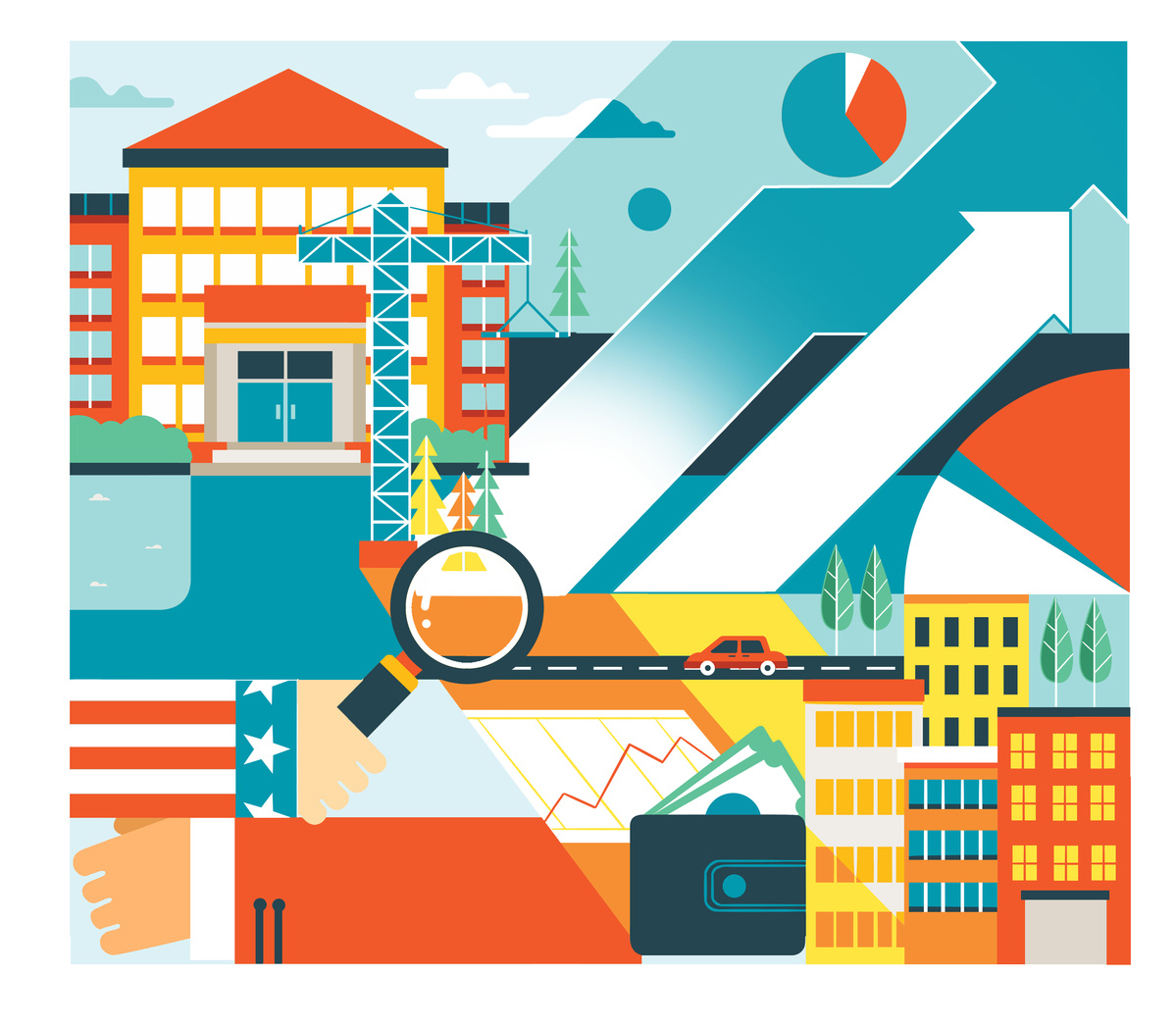
(Photo: China Daily)
After a turbulent 2020, China's economy is entering 2021 with a strong tailwind. The COVID-19 outbreak and the lockdowns and other strict measures implemented to contain it resulted in-6.8 percent year-on-year GDP contraction in the first quarter. But after China largely contained the spread of the novel coronavirus in the second quarter, the economy started to recover at an exceptional pace thanks to the policy stimulus and a strong rebound in demand in the housing and auto sectors. Better-than-expected export performance also helped boost industrial output.
More recently, the normalization of social activities has led to a strong recovery of the services sector. So we (Deutsche Bank Asia Research) forecast that real GDP growth will be 6 percent in the fourth quarter of this year, equal to the pre-pandemic GDP growth rate in the fourth quarter of 2019.
The positive economic momentum is expected to continue next year. And we expect China's real GDP to grow 9.5 percent in 2021. This high growth will be partly due to a low real GDP base in 2020. On a sequential basis, we forecast China's annualized quarter-on-quarter GDP growth will be around 6 percent in the first half of 2021 and slightly below 6 percent in the second half. In other words, the economy will return to its pre-COVID-19 growth path and stay on that path in 2021.
More importantly, consumption will be the main growth driver in 2021. Chinese households cut back on consumption spending and increased savings after the COVID-19 outbreak. Therefore, consumption's contribution to GDP growth this year is likely to be negative. But as the economy recovered, the household savings rate dropped from 36 percent in the first quarter to 33 percent in the third quarter, and we expect this trend to continue.
The household savings rate will likely return to normal levels before the end of 2021. By our estimates, this implies consumption spending will grow 17 percent year-on-year in 2021, and we expect consumption to contribute 7 percentage points to real GDP growth in 2021. But this forecast does not include possible "pent-up demand", that is, extra consumption spending funded by the drawdown of excess savings in 2020. If that happens, consumption's contribution to growth could be even higher.
Besides, consumption will likely be supported by a tighter labor market and narrower income gaps next year. The normalization of social activities has boosted employment in the labor-intensive services sector. The urban unemployment rate, at 5.3 percent in October, is largely back to the normal level and will likely drop further in 2021. And although migrant workers suffered the most during the lockdowns, by the third quarter their employment and income had both exceeded the levels in the fourth quarter of 2019.
Also, labor demand continues to grow in the services sector, and employers may need to offer larger wage hikes to attract migrant workers to return to work after Spring Festival, which next year falls in February. This will help narrow the income gap and might be a positive development for consumption, because lower income groups tend to consume more and save less of their income compared with higher income groups.
Further, the manufacturing sector is heading into a new capacity expansion cycle. The industrial capacity utilization rate recovered from 67.3 percent in the first quarter to 76.7 percent in the third, close to its highest level (78 percent) in recent times. And industrial profits have improved lately, while prices for some products (such as glass and copper) have increased rapidly in recent months.
We think China's producer price index inflation will likely turn positive in 2021, and manufacturing investment may increase. In particular, the demand for cars is likely to stay strong next year, leading to higher investment by automakers as well as upstream suppliers. Another promising area is low-carbon industries. China is stepping up its climate commitments, and we expect more investment in related industries including renewable energy (such as solar and wind power) and clean transportation (such as new electric vehicles and high-speed rail).
With stronger growth, the stage will be set for monetary policy exit. And with economic growth back on track, the focus of the People's Bank of China (the country's central bank) will again be on containing overall leverage and ensuring financial stability. The central bank may tighten its monetary policy next year and in terms of policy rates, we think it will hike the medium-term lending facility rate twice, 10 basis points each time, in the second half of 2021 when global growth is likely to accelerate and larger and earlier hikes are possible if inflation or asset (especially property) prices surge.
Next year, China's current account surplus is likely to be sustained. The current account surplus is already on track to reach $300 billion (2 percent of GDP) in 2020, doubling from the 2019 level. The higher surplus is in part due to China's success in largely containing the spread of COVID-19, which helped resume the production of personal protective equipment, other medical products and consumer goods in China while it was disrupted by lockdowns elsewhere.
Moreover, more than half of the current account improvement comes from services, as China greatly eased domestics and overseas travel restrictions. And even though international travel is unlikely to return to normal anytime soon, we think China's current account surplus will remain stable. So we forecast that China's current account will be $288 billion (1.6 percent of GDP) in 2021.
This is an excerpt from a recent report by Deutsche Bank Asia Research.


